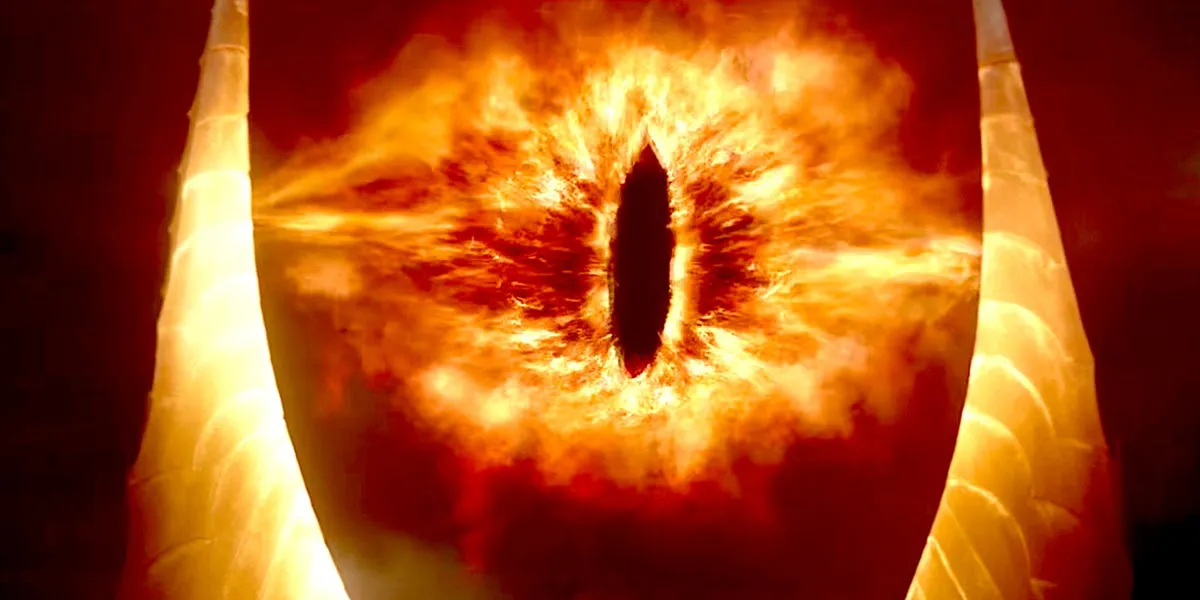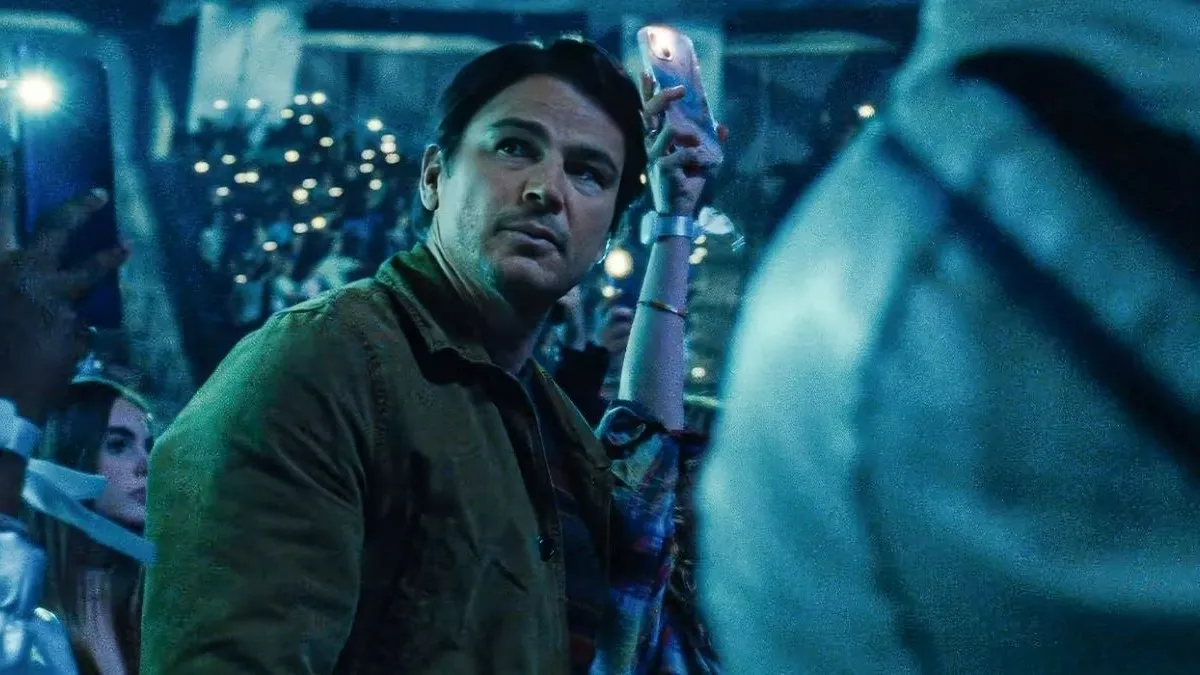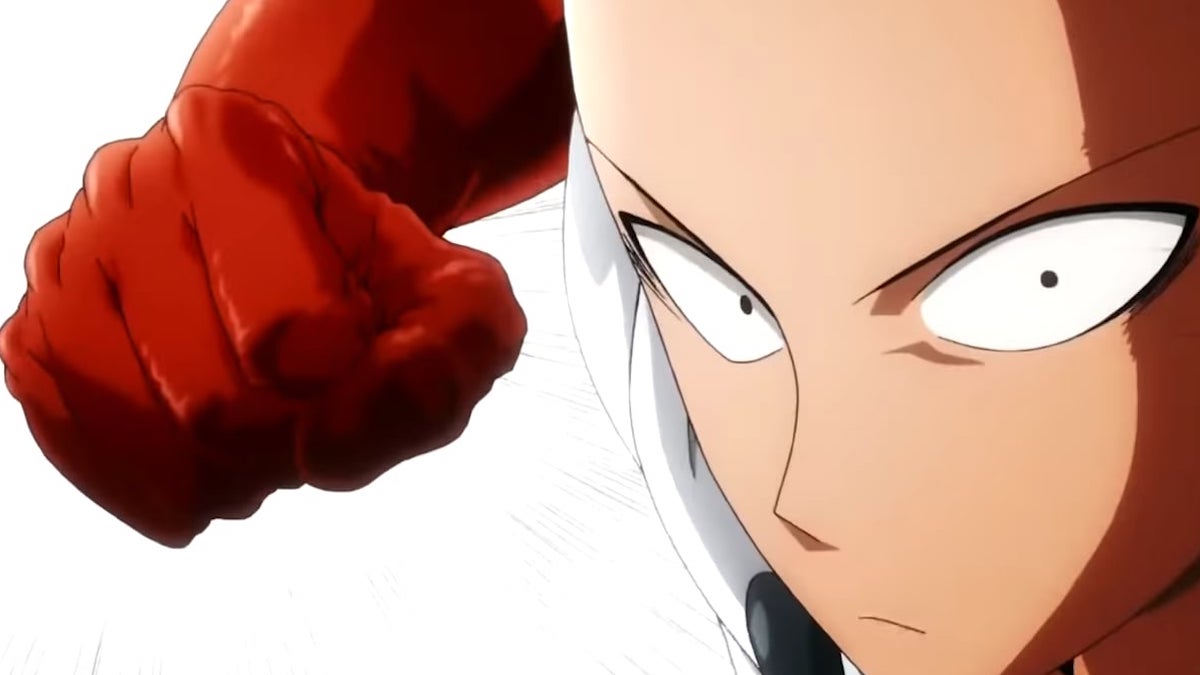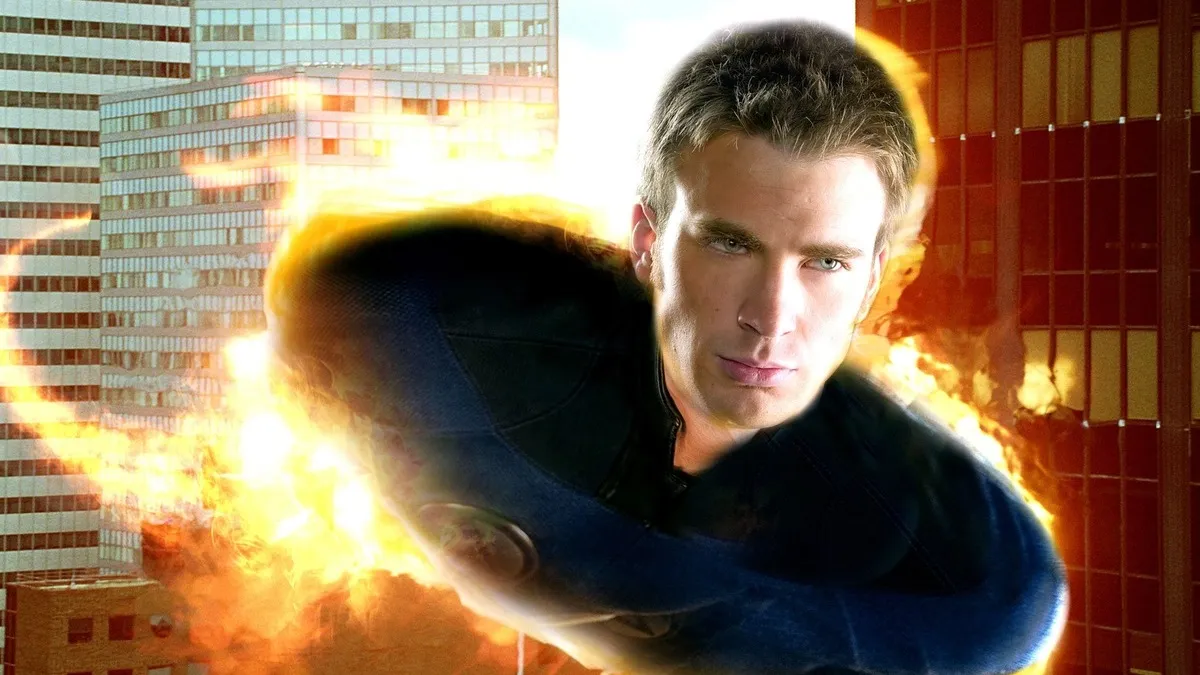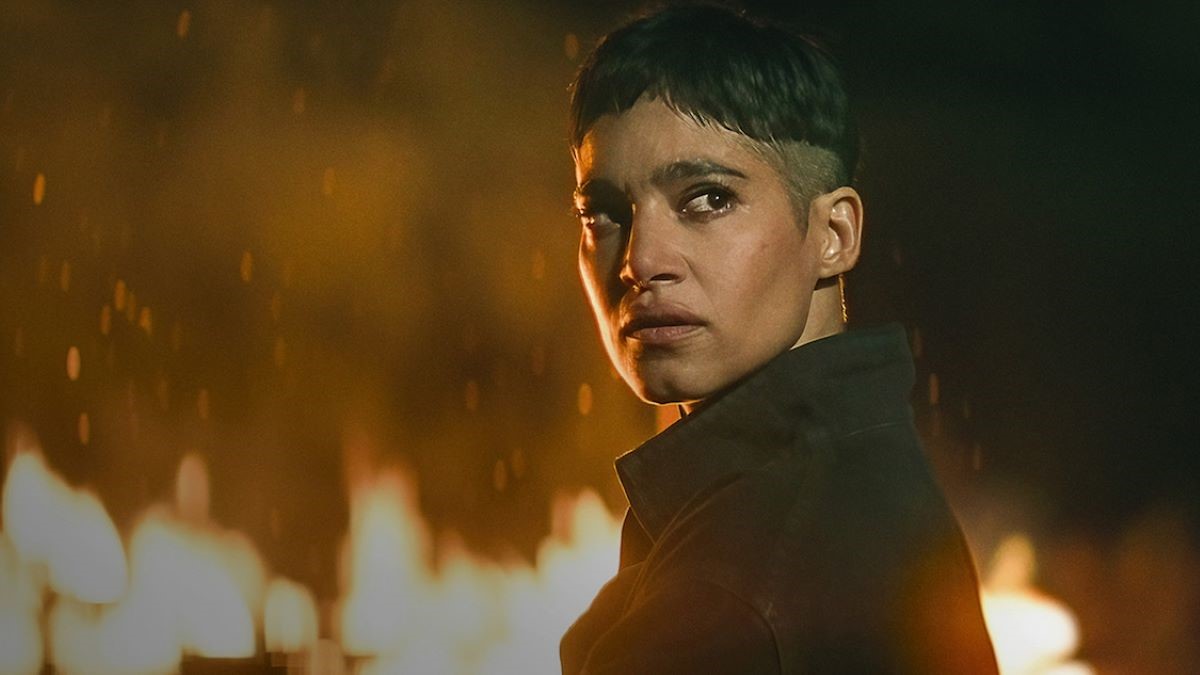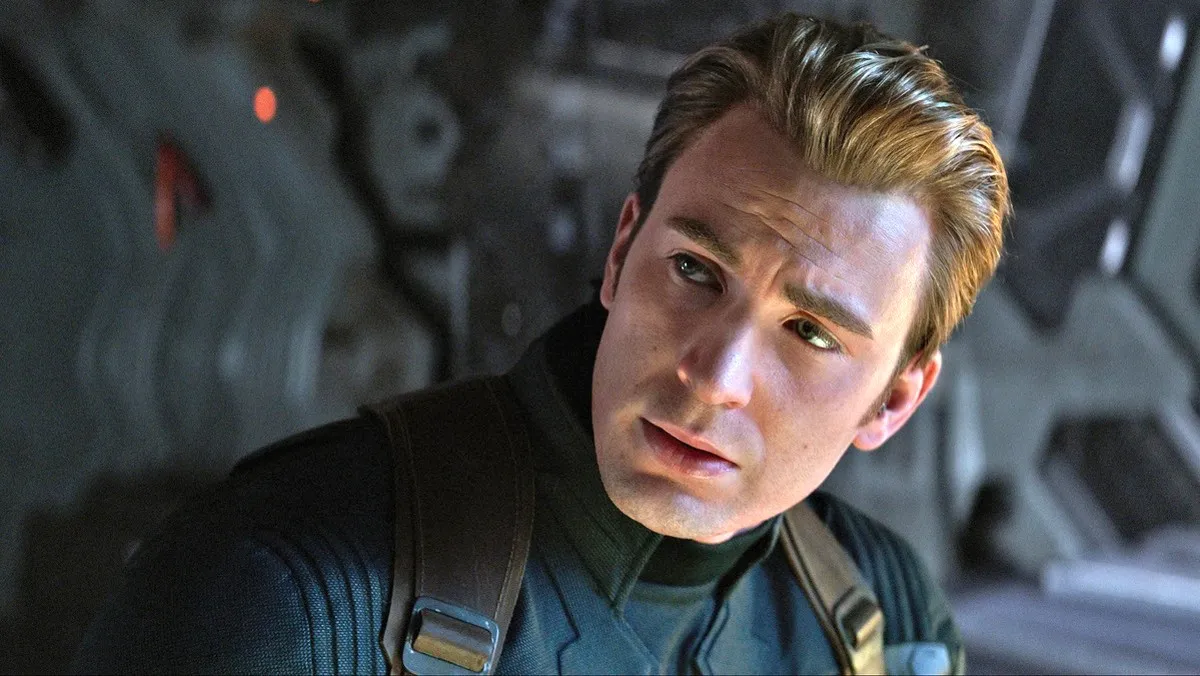In the epic film adaptations of The Lord of the Rings, Sauron is one of the first characters we meet. The Fellowship of the Ring opens with Lady Galadriel narrating the momentous war that closed the Second Age of Middle-earth as Sauron was defeated by the Last Alliance of Elves and Men. It’s a tense moment during the fierce battle when we realize the dark lord is approaching from the fearful reactions of men and elves alike. The nine-foot-tall, self-appointed ‘Lord of the Earth’ lived up to the hype. All spiked helmet, head to foot armor, and devastating attack moves, with the Ring of Power gleaming on his finger, we see him batter through swathes of soldiers.
But Sauron appears in quite a different form for most of The Lord of the Rings trilogy. It doesn’t look like a form that could do much with a ring, no matter how powerful it was. Despite that, Sauron was somehow far more menacing and charismatic like this than when he stomped onto the battlefield.
When you think of Sauron in the movie trilogy, he’s in the form of a giant flaming eye.
But how did Sauron become an eye?
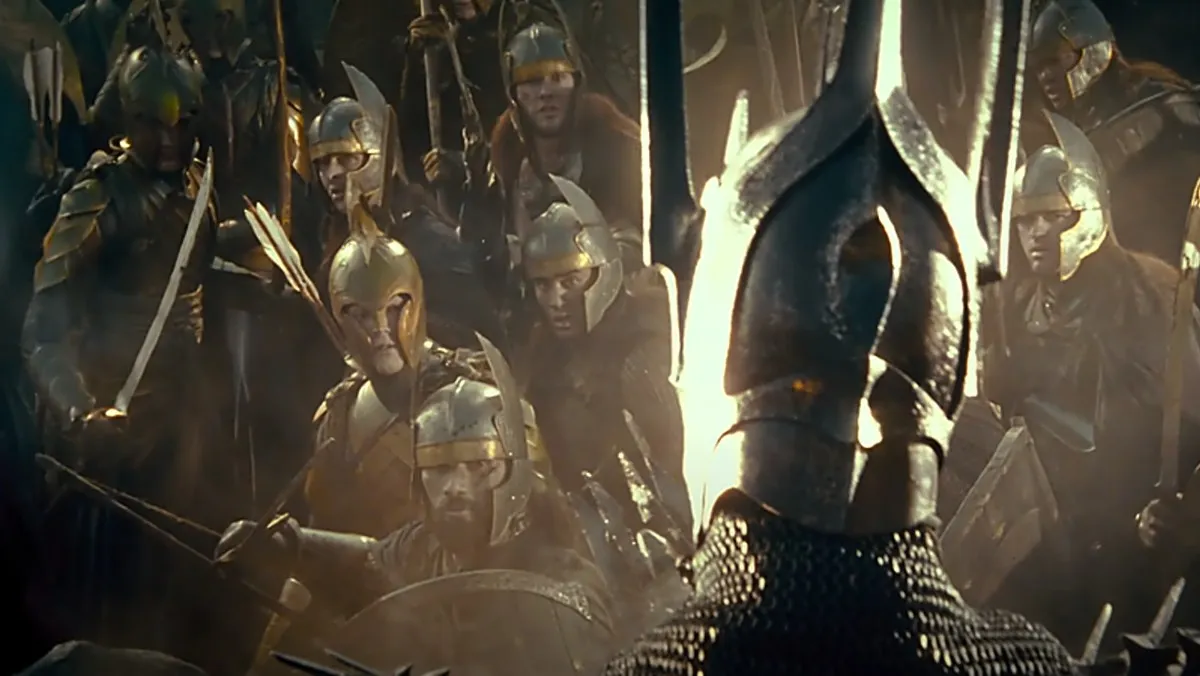
We see Sauron’s apparent demise in that flashback to the War of the Last Alliance. He’d amassed an army capable of threatening Middle-earth from his fortress Barad-dûr in Mordor, and man and elf could only defeat him by working together.
When he arrived at the battle fashionably late, Sauron decimated many in the Alliance armies, even slaying the Elven king Gil-Galad (although this sequence was deleted from the film), and the Elendil, the first High King of the Dúnedain. But when Elendil’s son Isildur picked up his father’s broken sword and cut the Ring of Power from Sauron’s hand, it looked like the dark lord was finished for good.
Without this mighty weapon and power source, Sauron, the enemy of the free peoples of Middle-earth, was defeated. His physical form was destroyed, and his armor fell to the ground. The Ring then passed to Isildur, who famously failed to destroy it, but what happened to Sauron?
Thousands thought they had witnessed Sauron’s death at the end of the Second Age, with his armies defeated, and his body destroyed. But Sauron’s spirit endured. Although disembodied, his essence was able to escape the battlefield and retreat into Mordor, where it reflected on another failed campaign and the loss of his greatest weapon.
Without a physical form, Sauron’s return took longer, but he was able to regrow his power and influence once again. He returned to threaten Middle-earth in the Third Age, the period recounted in The Hobbit and the Lord of the Rings. Without a body, Sauron now manifested as a giant flaming eye, held between the two spikes at the top of his dark stronghold Barad-dûr.
In many ways, this was the most fearsome version of Sauron. In the novels, J.R.R. Tolkien suggests Sauron takes multiple forms after his resurrection. Peter Jackson realized the devastating power of keeping the dark lord in this form for the duration of the trilogy. At first glance, It hardly seemed to be the most convincing or dangerous appearance for an evil threat of unimaginable power, but this all-seeing Eye could control Middle-earth from afar.
The Eye of Sauron became a symbol of the dark lord’s power, but it posed a great threat to anyone who opposed the forces of Mordor from its lofty position. While he assembled an army to do his bidding and corrupted lieutenants throughout the land, he also kept his giant eye open for signs of any opposition to his rising influence. One of Sauron’s lesser-known qualities was undoubtedly his incredible ability to foresee what was coming. When he recognized the Fellowship that had assembled to destroy the Ring of Power and defeat him, he was able to marshall his forces against them, hoping to acquire the Ring for himself.
Sauron remained in the form of a giant eye until the climax of The Return of the King when Frodo Baggins and his loyal friend Samwise Gamgee destroyed the Ring in the fires of Mount Doom. The Ring’s destruction finally ended Sauron’s threat. As Barad-dûr crumbled, the Eye of Sauron turned to smoke before an explosion destroyed the dark lord’s once-mighty stronghold.

